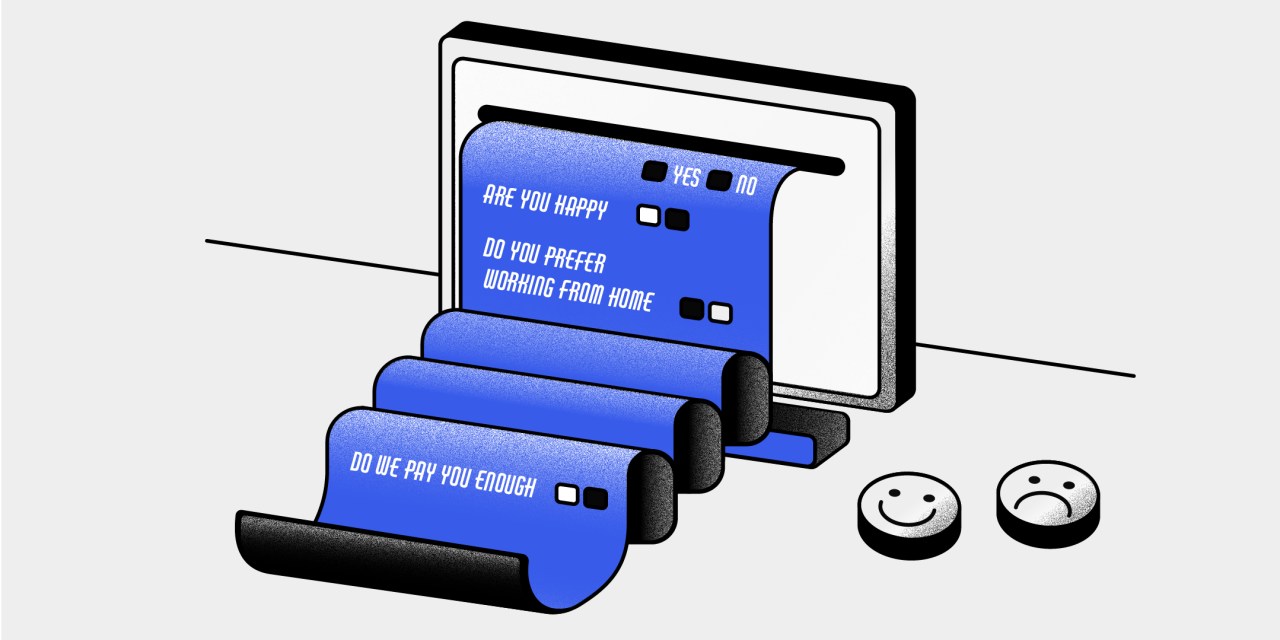Employers relying on ‘pulse’ surveys to gauge levels of employee fatigue and help retain talent

In the fight to stem the flow of resignations, employers are arming themselves with micro surveys to find out exactly what employees want and how to make them happy.
Surveying employees isn’t new. But the evolving impact of Covid-19 on the workplace and the ongoing struggle to retain talent means companies need quick feedback on timely topics like the sentiment on return-to-office or the likelihood they’ll be looking for a new job within the next six months.
These “pulse” surveys are typically one to three questions sent as informal messages via Slack or Microsoft Teams for desk-based employees and text messages for those not in an office.
“Employers are managing a pandemic, historical levels of employee burnout and changes to their work arrangements,” Elora Voyles, Ph.D., a people scientist at the employee engagement software firm TINYpulse, told WorkLife. “There are a lot of different question marks that need to be answered and employers are using surveys as a tool to answer those questions.”
Voyles estimated that the number of employee surveys she’s worked on doubled from January 2020 to January 2022. Response rates peaked in May 2020 when they were at 66%, Voyles said. Since then, they’ve remained steadily around 46%.
Questions changed as the pandemic did. At first, they were asked whether employees have the tools they need to work from home. They’ve evolved from there: Do you want to return to work? Should we require employees to be vaccinated? If we return to the office how many days do you prefer to be in person?
Pulse surveys started growing in popularity just before the pandemic, which some experts attribute to millennials joining the workforce in greater numbers and pushing for their voices to be heard. The pandemic accelerated the trend. It’s now become a way to hear candid thoughts from employees, especially since managers are less likely to have an informal lunch or after-work drink to check in with their team.
“A lot of it’s generational, but the nature of work has changed because of Covid,” said Casey Carey, chief marketing officer of Kazoo, the employee experience software firm. “It’s less hierarchical, it’s less bureaucratic, it’s more networked, it’s more relationship-based.”
Getting instant feedback has been ingrained into society thanks to social media, he said.
Of course, all these questions mean nothing if employers don’t act on the information. But more significantly, if employees see that nothing is being changed, they’re likely to lose confidence in management — and stop filling out surveys.
Kazoo, which creates surveys for clients and utilizes them with its own workforce, encourages managers to implement changes based on survey results. All responses are anonymous and a survey is tossed if it receives less than five responses since it would be too easy to discern who the respondent is. Managers are encouraged to use the survey results as a conversation starter with their teams. From there, managers should communicate the changes made as a result of those conversations.
This begs the question: Can you ask too many questions? Yes, and if the response rate drops significantly, that’s a sign employees are being over-surveyed.
“There is no hard and fast rule on how much is too much,” Voyles said. “As long as you’re able to keep up and make changes and employees are responding at a consistent rate, then you’re not doing it too much.”
